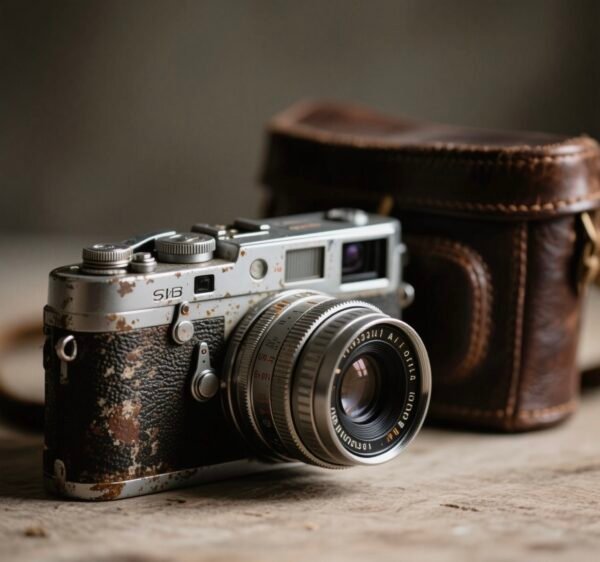Is Hygiene an Overlooked Factor in Camera Equipment Design?
Camera brands invest heavily in optics, sensors, and ergonomic design. However, one silent factor remains under-addressed: microbial contamination. From professional photographers shooting in humid jungles to vloggers using cameras daily, equipment is constantly exposed to bacteria and fungi, potentially impacting both user health and product longevity.
This raises a critical question: Can integrating antimicrobial technology into camera equipment materials deliver measurable value to users and brands?
Where Do Microbes Hide in Camera Gear?
Unlike smartphones, which users clean frequently, camera equipment often escapes such attention. Research and user behavior analyses indicate:
- Hand Grips & Rubber Casings: Direct skin contact accumulates sweat, oils, and bacteria, especially during long outdoor shoots.
- Lens Covers & Caps: Often placed on surfaces or inside bags where bacteria and mold proliferate.
- Camera Bags & Straps: Retain moisture, soil particles, and microbial spores after field use.
Combined, these create microenvironments that foster microbial growth, leading to odor, surface degradation, and potential skin irritation for users.
Impact on Product Performance and Brand Perception
Microbial contamination isn’t just a hygiene issue. Its commercial implications include:
✅ Material Degradation
Fungi and bacteria can gradually degrade polymers and rubbers, compromising grip texture, casing durability, and aesthetic appearance.
✅ User Health Concerns
Skin irritation, allergies, or infection risks become significant, particularly in hot, humid climates where sweat and microbes multiply rapidly.
✅ Brand Differentiation Gaps
With most brands silent on antimicrobial protection, integrating such technology offers a unique competitive edge in the crowded camera market.
Scientific Solutions: Antimicrobial Agents for Camera Materials
Silver-Based Agents
- How they work: Release silver ions that disrupt microbial membranes and replication.
- Ideal applications: Polymer casings, rubberized grips, lens cover plastics.
- Advantages: Broad-spectrum efficacy, long-term stability, minimal impact on material color or feel.
Zinc-Based Agents
- How they work: Inhibit microbial enzymes, preventing cell growth and reproduction.
- Ideal applications: Rubber grips, carry handle polymers, external accessory casings.
- Advantages: Cost-effective, mild, safe for frequent skin contact.
Copper-Based Agents
- How they work: Generate reactive oxygen species that damage microbial proteins and DNA.
- Ideal applications: Metal parts like strap hardware, buttons, or external frames.
- Advantages: Strong antibacterial and antifungal action, particularly effective in high humidity conditions.
Design and Manufacturing Integration
Implementing antimicrobial protection is not a simple coating. Brands should consider:
- Polymer Masterbatch Integration
Silver or zinc agents compounded into polymers during production ensure uniform, durable antimicrobial properties without risk of abrasion loss.
- Surface Coating Strategies
For metal components, nano-silver or copper coatings can be applied, offering effective microbial protection while preserving aesthetics.
- Compatibility Testing
Ensuring agents do not affect critical properties such as grip friction, UV stability, electromagnetic shielding, or color consistency is essential.
Market Trends and Strategic Opportunities
📈 Consumer Awareness Shift
Post-pandemic hygiene consciousness remains strong. Users increasingly value health-protective features in daily-use products, including electronics.
🌱 Sustainability Synergy
Combining antimicrobial integration with recycled or bio-based polymers enhances environmental credentials, aligning with sustainability commitments.
💡 Brand Storytelling Potential
“Built for performance and designed for hygiene.” This messaging elevates product positioning from purely functional to holistically user-focused, supporting premium pricing strategies.
Challenges to Navigate
💰 Cost-Benefit Balance
Material costs rise by 5–10% with antimicrobial integration. Brands must quantify value through extended product life, reduced returns, and premium positioning benefits.
🛠 Regulatory Clarity
Complying with ISO 22196 / JIS Z 2801 antimicrobial efficacy standards and ensuring claims align with regional regulatory guidelines prevents marketing risks.
📜 Communication Precision
Marketing must clearly state antimicrobial benefits (e.g. reduces microbial growth on surfaces) without implying complete sterilization or medical-grade protection.
A Strategic Perspective: Beyond Hygiene
Antimicrobial integration is not merely a surface-level upgrade. It represents:
- An opportunity to innovate where competitors remain silent
- A protective measure that preserves product value over time
- A brand positioning tool demonstrating care for user health and material longevity
Conclusion
In a market where technical specs are rapidly commoditized, antimicrobial protection offers camera brands a new dimension of user-centered innovation. By safeguarding both product integrity and user wellbeing, antimicrobial materials enable brands to capture health-conscious consumers while reinforcing reputations for quality and foresight.
✉️ Collaborate with Us
Our team specializes in developing silver, zinc, and copper-based antimicrobial solutions optimized for camera equipment materials. Contact us to explore tailored integrations that align with your design, manufacturing, and brand objectives.


-300x210.jpg)
